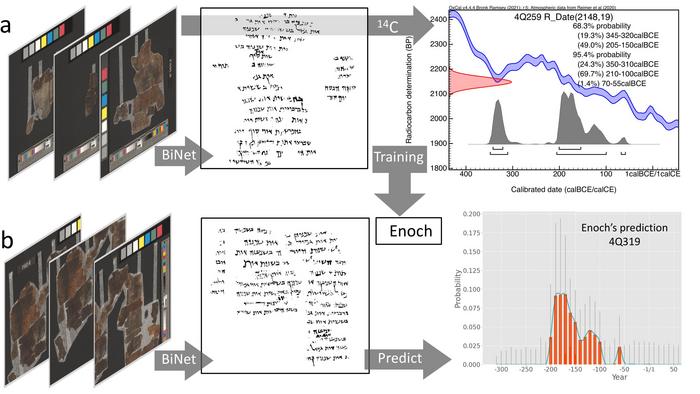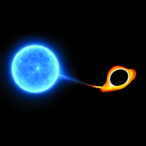
The Dead Sea Scrolls, a collection of ancient manuscripts discovered in the mid-20th century, have been pivotal in reshaping our understanding of early Judaism and Christianity. Despite their historical and biblical significance, dated only generally from the third century BCE to the second century CE, the individual manuscripts have long eluded precise dating. Recent advancements, however, promise to unveil new dimensions of this ancient text, as researchers adopt innovative techniques that combine radiocarbon dating, paleography, and artificial intelligence.
In a groundbreaking study led by an international team from the University of Groningen, a new date-prediction model named Enoch has been developed. This model is a watershed moment in the scholarly pursuit of dating these manuscripts, as it leverages artificial intelligence to analyze writing styles and integrate these findings with radiocarbon dating. The result is a systematic and robust method that promises to deliver much more accurate date estimations of the individual scrolls than traditional methods have allowed.
Previously, the dating of the Dead Sea Scrolls relied heavily on paleography—the study of ancient handwriting. While paleography provided invaluable insights, it suffered from a lack of empirical foundation. With many of the manuscripts missing chronological anchors, there were significant gaps in the dating chronology, making it challenging to ascertain their actual age. Researchers faced a notable divide between securely dated manuscripts from the fifth to the fourth centuries BCE and later texts from the first and second centuries CE. This lack of corroborating artifacts left over a thousand scrolls without reliable dating.
.adsslot_WPQJZzVl2K{ width:728px !important; height:90px !important; }
@media (max-width:1199px) { .adsslot_WPQJZzVl2K{ width:468px !important; height:60px !important; } }
@media (max-width:767px) { .adsslot_WPQJZzVl2K{ width:320px !important; height:50px !important; } }
ADVERTISEMENT
To tackle this challenge, the Enoch project has combined new radiocarbon dating results from various scroll samples with advanced paleographic techniques. These methods were formalized under the European Research Council’s project entitled “The Hands That Wrote the Bible.” The innovative use of Bayesian ridge regression aided in this undertaking, allowing the researchers to establish more reliable chronological markers carved from radiocarbon data.
What separates Enoch from prior methodologies is its incorporation of BiNet, a specialized deep neural network designed to detect handwritten ink-trace patterns. By analyzing digitized manuscripts, researchers can evaluate geometric characteristics of the ink traces at both micro and macro levels. This dual-layer approach takes into consideration aspects such as curvature and character shapes, adding a robust quantitative foundation that traditional paleographic analysis lacks.
With Enoch, the potential for predicting the dates of roughly a thousand manuscripts from this significant timeframe has opened new vistas of exploration within biblical scholarship. By feeding the model binarized images of 135 different scrolls, the researchers have begun a first phase of empirical testing. When the resulting date predictions were evaluated by expert paleographers, they provided a new level of insight that could refine or support existing estimates that have largely been subjective until now.
The implications of these findings are profound. Initial results from Enoch’s predictions indicate that many of the manuscripts, including biblical scroll fragments, are much older than previously estimated, aligning them more closely with the historical periods of their presumed authors. Specifically, the findings suggest that two fragments, 4QDaniel and 4QQohelet, are from the same era as the early authors traditionally ascribed to these texts. The revelations challenge longstanding scholarly views that attributed these ancient texts to later eras or to anachronistic figures such as King Solomon.
Furthermore, the study has illuminated that the Hasmonaean and Herodian script styles, which are vital in understanding the evolution of ancient texts, may date back further than previously thought. This reinterpretation of the timeline alters perceptions of cultural and intellectual developments within ancient Judea, offering richer context to the communal and political milieu in which these manuscripts emerged.
The data-driven insights generated by Enoch hold immense potential for transforming not just the methodology of dating ancient manuscripts but also for ushering in new interpretations of literature and history pertaining to early religious communities. As the researchers delve further into the predictive capabilities of this innovative model, scholars anticipate not just adjustments to previous models of biblical authorship and chronology but also significant shifts in the broader understanding of ancient textual history.
As artificial intelligence continues to evolve and integrate within the field of humanities, the insights gathered from Enoch stand to redefine our comprehension of not just the Dead Sea Scrolls but manuscript studies at large. The translation of digital analyses into tangible historical insights underscores the capacity of cutting-edge technology to interlace with traditional humanities scholarship, potentially ushering in a renaissance in the understanding of long-buried texts.
Such advancements mark a pivotal step in the synergy of technology and historical inquiry. The Enoch model’s ability to articulate the nuances of manuscript writing styles is an exciting leap forward, providing an empirical framework that can be replicated across various manuscript collections that remain only partially dated, allowing a clearer pathway toward understanding numerous ancient texts yet to be thoroughly examined.
In conclusion, the convergence of artificial intelligence with traditional methods of historical and textual analysis through the Enoch project is poised to propel the academic discourse surrounding the Dead Sea Scrolls forward, providing not only refined chronological understandings but also deepening the appreciation of the cultural legacies embodied within these profound writings.
Subject of Research: Dating ancient manuscripts through radiocarbon and AI-based writing style analysis
Article Title: Dating ancient manuscripts using radiocarbon and AI-based writing style analysis
News Publication Date: 4-Jun-2025
Web References: http://dx.doi.org/10.1371/journal.pone.0323185
References: Mladen Popović, Maruf A. Dhali, Lambert Schomaker, Johannes van der Plicht, Kaare Lund Rasmussen, Jacopo La Nasa, Ilaria Degano, Maria Perla Colombini, Eibert Tigchelaar
Image Credits: Maruf Dhali, University of Groningen
Keywords: Artificial intelligence, radiometric dating, imaging
Tags: advancements in radiocarbon datingartificial intelligence in manuscript analysisbreakthroughs in biblical manuscript studieschronological gaps in ancient manuscriptsDead Sea Scrolls dating techniquesearly Judaism and Christianity researchEnoch date-prediction modelhistorical significance of Dead Sea Scrollsinnovative methods in manuscript datinginterdisciplinary approaches to ancient textspaleography and ancient handwritingUniversity of Groningen research on ancient texts



